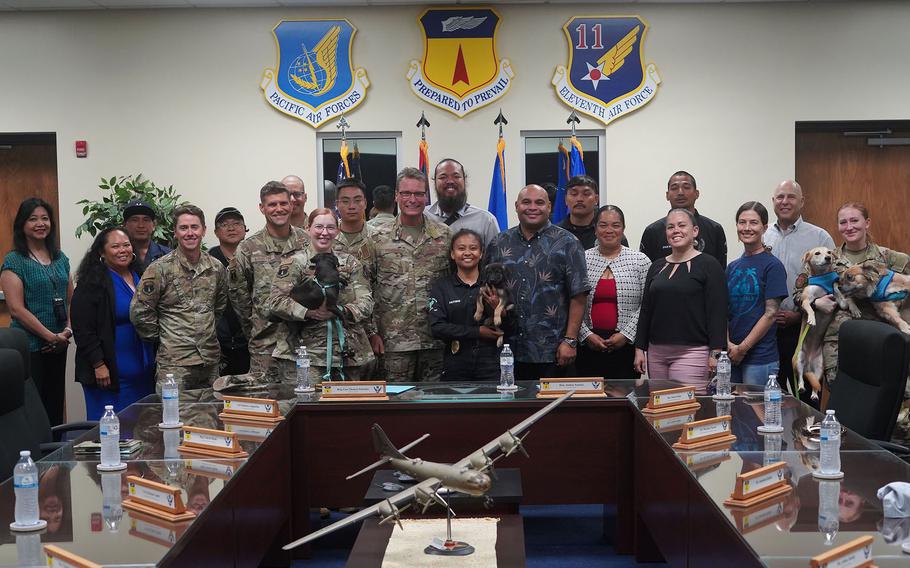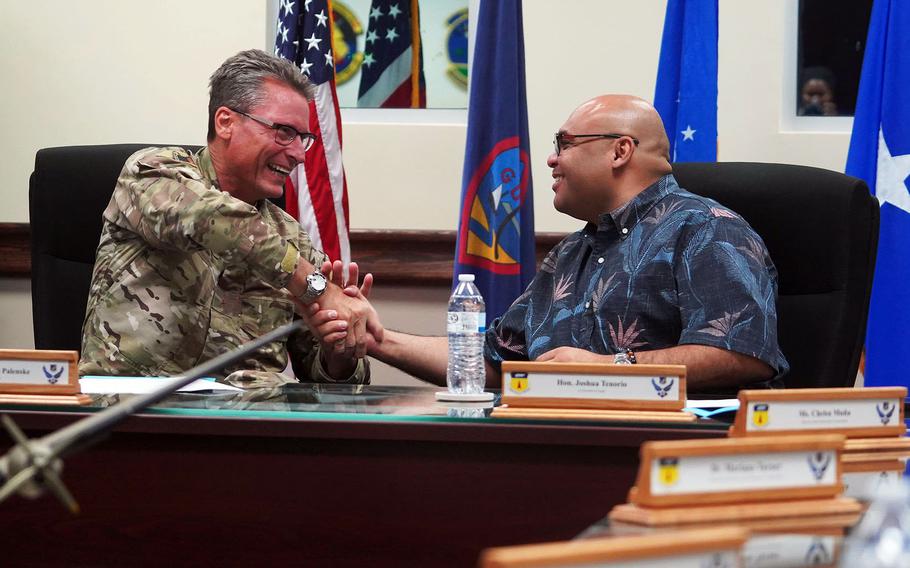
Air Force civil engineers can now work outside Andersen Air Force Base to help the Guam government manage the island’s stray dog population. (Adasha Williams/U.S. Air Force)
The Guam government and U.S. military have reached a novel agreement that lets civil engineers work outside Andersen Air Force Base to help rein in the island’s stray dog population.
The 36th Wing at Andersen will provide vehicles, animal-handling equipment, kennel maintenance assistance and personnel, according to a Tuesday news release from the U.S. territory’s Agriculture Department.
“This is a first-of-its-kind agreement and shows the amazing relationship between Andersen Air Force Base and the Government of Guam,” Marlyn Aguilar, an attorney adviser at Andersen’s Office of the Staff Judge Advocate, said by email Wednesday. “We are proud to continue supporting the local communities and building strong connections across the island.”
The agreement marks a significant step toward coordinated efforts to control Guam’s strays — known locally as “boonie dogs” — according to the Agriculture Department and the wing.
Significantly, it permits the 36th Civil Engineer Squadron to assist with off-base operations, Guam territorial veterinarian Dr. Mariana Turner said by email Wednesday.

Brig. Gen. Thomas Palenske, commander of the 36th Wing, and Guam Lt. Gov. Josh Tenorio shake on an agreement allowing Andersen Air Force Base’s civil engineers to work outside the installation to manage the island’s stray dog population, April 24, 2025. (Adasha Williams/U.S. Air Force)
A 2014 Humane Society International survey estimated approximately 24,500 strays are living on Guam, which spans 212 square miles — about the size of Chicago. In September, the Agriculture Department established a Dog Population Management Task Force to pursue humane solutions. The Agriculture Department conducted a survey earlier this year to update the decade-old information, but the results have yet to be released.
Guam’s stray dogs have been blamed for attacks on people and pets, traffic hazards, and the spread of disease and pests, according to the Agriculture Department. Many suffer from starvation, injuries and illness.
The Agriculture Department division in charge of animal health and control is “passionate and dedicated to finding solutions, yet we are restrained by limited resources,” Turner wrote. “The collaboration with Andersen AFB serves as a force multiplier for our efforts.”
Andersen’s civil engineers have been supportive in recent years by capturing strays and helping with adoptions, wing spokesman Capt. Casey Bell said by email Wednesday.
Airmen from the base have also repaired damaged fences and kennels at Guam Animals in Need, and the wing expects to deepen its relationship with that shelter, Bell said.
Turner credited wing commander Brig. Gen. Thomas Palenske with helping to finalize the agreement.
“General Palenske has been very active with pursuing a solution to the free-roaming boonie dog population on Guam,” she wrote.
No funds are transferred under the agreement, which allows the Agriculture Department and the wing to share resources and expertise and creates a formal process for each party to request support services, according to Tuesday’s release.
The agreement is valid for up to 10 years, the release said. Both sides will conduct annual reviews to ensure its effectiveness and relevance to the community.